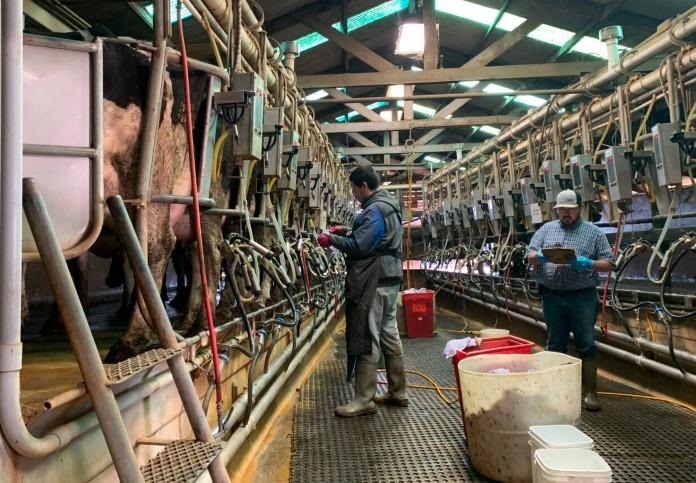The San Joaquin Valley is an agricultural hub. Two lane highways separate fields of citrus and nut trees across central California.
Tipton based dairy farmer Tom Barcellos owns 1,800 cows. He said the milk they produce winds up in Land O’ Lakes products in grocery stores along the West Coast.
“Our livelihood is based on how we care for the soil and how we care for our animals. And if we don’t care for them, then we’re not going to be successful,” Barcellos said.
One key to success is to diversify. Barcellos also harvests lemons, pistachios and solar power.
California farmers have solar panels are uniquely positioned to benefit from investing in solar arrays. California farmers have more land, sunshine and higher energy costs than the typical American.
Of Barcellos’ almost 2,000 acres of land, a modest five acre plot is filled with solar panels. He doesn’t profit off of the panels, but they do lower his energy bills, which aren’t cheap.
“The dairies are relatively consistent. You milk twice a day, they use the same power morning and night and shifts. Now our wells, because we are in all irrigated farmland, our wells are used only during crop cycle. So our bills can get pretty substantial in the summertime,” Barcellos said.

Dairy farmer Tom Barcellos’ cows are milked twice a day.
Sunny California gets enough rays in the winter so that Barcellos can offset those higher summertime costs. It doesn’t hurt that Barcellos bought his panels ten years ago, and they’re about to be paid off.
While Barcellos has installed solar to offset personal costs, other farmers are taking solar to another level by leasing hundreds of acres of their land to solar project developers. These farmers can make a profit off solar and might stop growing crops altogether. Becky and Jim Koontz went that route. Becky’s family got on the solar bandwagon early. Solar developers in the 1980s approached her father.
“They were not the energy companies. The people that look for the properties are prospectors,” Becky said.
Solar fields now cover about 200 acres of the Koontzes’ 500 acres of farmland. Former plum and grape farmers, the Koontzes no longer growing crops on the rest of their farmland. Becky said it didn’t make business sense to continue farming.
“The price of wheat hasn’t varied that much since 1940. That’s a problem in farming in general. The basic product, the wheat, the corn, the grain crops, the price to the farmer has actually gone down. And yet the price of the equipment, the price of the water, the price of the groceries you feed your family has all gone up, up, up for the last 80 years,” Becky said.
Click here to see more...